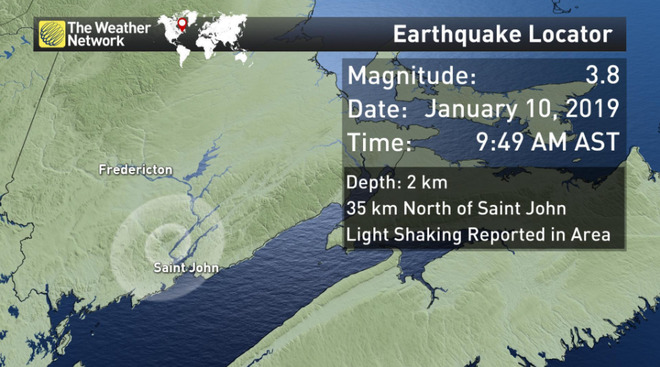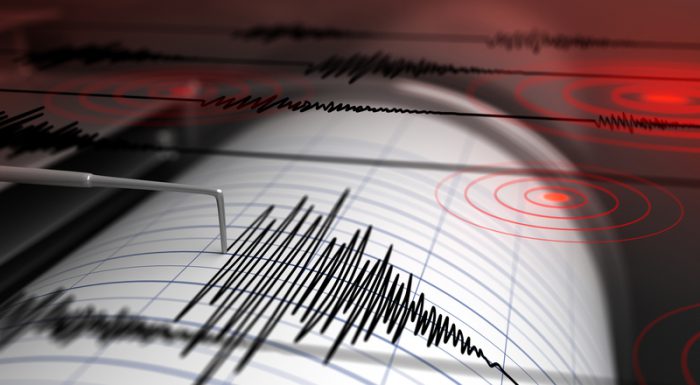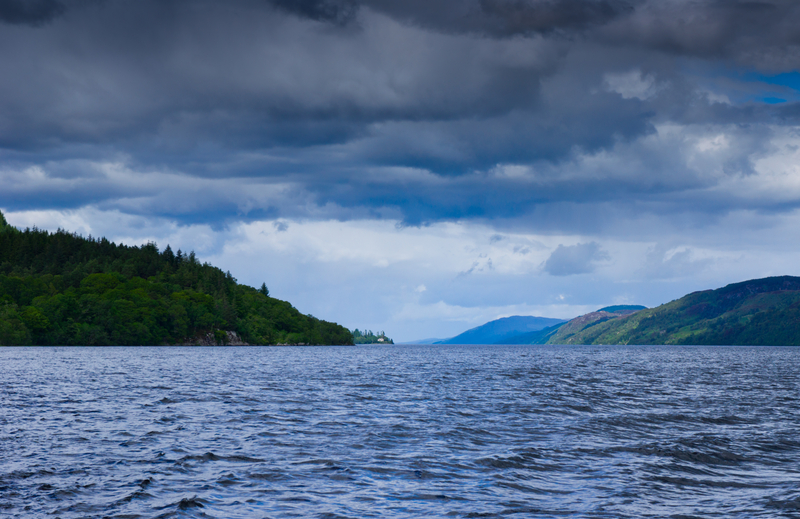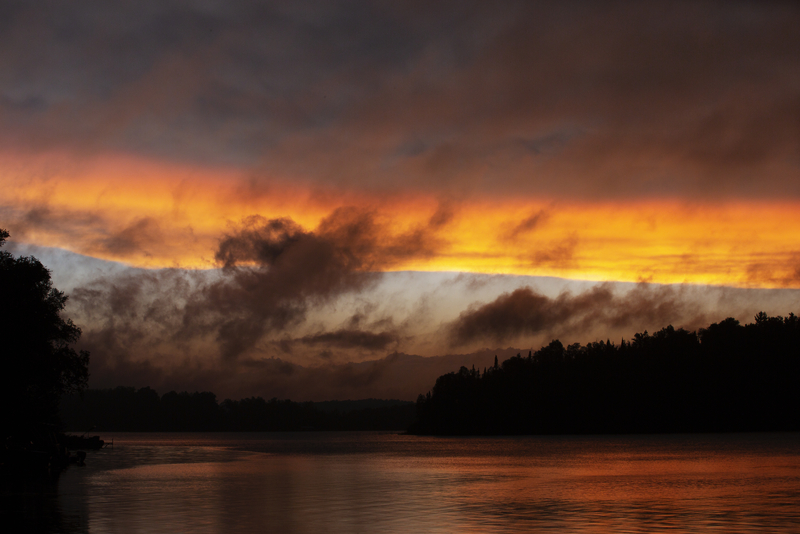At 9:49am AT Thursday morning, residents in southern New Brunswick experienced a noisy, unwelcomed surprise. An earthquake!
EARTHQUAKE Mag=3.7 on 10 Jan at 09:49 AST.
Details : https://t.co/nwLbnn7qRp
17 km WNW of Hampton, NB
35 km N of Saint John, NB
— Earthquakes Canada (@CANADAquakes) January 10, 2019
If the words "earthquake" and "New Brunswick" sound a bit strange together, that's probably because they so rarely occur in this area. At least, it's rare that you ever hear about them. But they do happen.
In fact, the largest earthquake on record in the province happened in the Miramichi region in 1982. That one actually hit 5.7 on the Richter scale (which measures quake strength)—that's fairly strong, though compared to the ones that rocked Mexico in 2017, it's quite minor.
And at 3.8 (the final measurement signed off by the Canadian government), yesterday's quake was more minor still—about 100 times less powerful than the Miramichi quake. That doesn't mean that it went unnoticed though.
A big bang

The location of Thursday's earthquake. (The Weather Network)
The centre of the quake was about 35 kilometres north of Saint John, New Brunswick's second largest city (as well as one of the oldest cities in Canada). The quake lasted for about 5 to 10 seconds, which when you think about it is kind of a long time. (If you don't believe us, try counting slowly to 5 right now ... and imagine that everything in your room is shaking and rattling as you do it. Kind of freaky, no?)
Fortunately, the quake was both minor enough—and far enough away from heavily populated areas—that authorities don't expect any major damage. One of the closest communities to the epicentre of the quake was Grand bay-Westfield, which is a suburb of Saint John. People who lived there reported hearing sounds like a bang. In one case, the fire department was called because of a report of an explosion in a basement. Though it turned out to be a false alarm, you get an idea of what this all felt like!
On the rebound
Intraplate quakes are rare, but they can be devastating as this one in Puebla, Mexico was in 2017. (Getty Embed)
This was what scientists call an intraplate quake—that means that it happens within a tectonic plate.
As you can read at the end of this post, tectonic plates are the giant sheets of rock that make us the Earth's crust. As they move they sometimes slip and shift more quickly than usual, causing an earthquake. But those are interplate quakes. They happen along the boundaries of the plates.
In an intraplate one, the plate itself adjusts its position somehow. According to Nick Ackerley, a scientist at Earthquakes Canada who spoke to the Toronto Star, Thursday's quake was caused by the crust rebounding back into position after having been pushed downward by a heavy glacier ... which was there 20,000 years ago! (Uh, you might want to get your reaction time checked out, Mr. Tectonic Plate.)
Either way, we glad to hear that all the people in southern New Brunswick had to deal with was a little scare and a few pots tossed on the floor. Much better than an exploding basement!
 A seismograph is used to measure tremors in the earth's crust. (© Petrovich11 - Dreamstime.com)
A seismograph is used to measure tremors in the earth's crust. (© Petrovich11 - Dreamstime.com)









